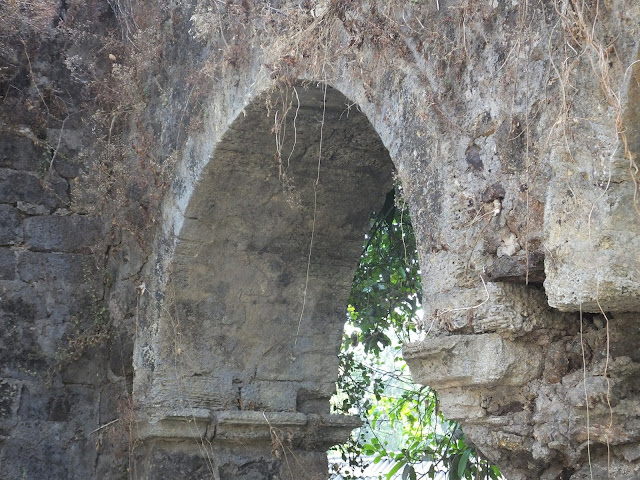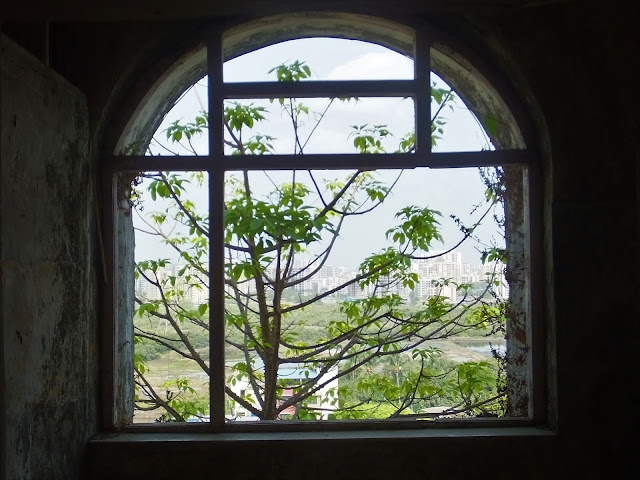Apart from the rich history that is attached to the formation of India and its legend, Mumbai has a unique chapter and can make historian's minds heavy. Mumbai's culture act as pure palimpsest and is a complete meal for anyone suffering from a deficiency in history lessons. The numerous forts scattered around the city are a testimony for the same. It comes as surprise to many that there were in total 11 forts in the city. Sitting on the urban fringe of Thane city and on a hill just south of Ulhas river and overlooking the natural creek on its west side, Ghodbunder fort is one of the forts and Mumbai's 16th-century marvelous piece of architecture.
The humble Ghodbunder road, the state highway that connects Thane with the northern suburbs of Mumbai today once acted as a bridge between different cultures. The significance of this place was such that it is said to have played a crucial role in Indo- Arab trade which the Portuguese later used to monopolize sea routes in the Arabian Sea. There were several empires that fought wars during that era. Horses were a precious commodity in the backdrop of these wars. The Persian horses came from Arab countries and landed at the port (bunder) hence initially the area came to be known as Ghodegoan (Horse village) and in later centuries got transformed into Ghodbunder. It is mentioned that such was a premium on horses that when traveler Marco Polo visited India, he wrote about how the kings ruling Thane had a pact with pirates that they would not attack ships carrying horses. Horses that would land at Ghodbunder would be sent to Kalyan, Vasai, Naneghat among other places. The place was a center point for trading horses.
In 1530 the Portuguese came to Thane and began fortifying the hill and completed the construction of the fort somewhere in 1730. They named the fort "Casaba de Tanna" which got renamed later as Ghodbunder fort. Arches built during the Portuguese era can still be seen at the fort at the present day. Portuguese also built a water tank and the church in the fort that still stands. It is said that festivities and congressional activities would happen in the courtyard of the fort. There also exist 6 horse stables with a low arched entrance built by Portuguese within the premises is quite unique to this fort and points towards the importance of the place in Horse trade.
 |
| Horse stables |
 |
| Entrance to Buruj |
Marathas under Chimnaji Appa successfully besieged the fort from the Portuguese in 1737. Some strengthening of fortification was done under Marathas which resulted in the construction of buruj or watchtower. This was the second layer of fortification of the fort. The buruj fortification is still intact while the smaller watch tower got destroyed over a period of time but the remnant of it can still be seen. It is said that other forts like Vasai and surrounding areas were connected by escape tunnels built under the river by the Marathas, the authenticity of this is not validated !! The mango tree planted by Chimnaji Appa in the courtyard which was used for congressional activities still stands in the fort premises.
 |
| watchtower remnants |
In 1818 the Britishers occupied the fort and made it into the district administration headquarters of East India company. Due to natural mangroves habitat around the area with flowing Ulhas river and creek nearby, the fort was also used by Britishers as a meeting point.
Another interesting thing was that of the church constructed by Portuguese. The church has a dome-like shape and a small minaret which is quite unique and shows the influence of Islamic architecture. This is due to the fact that Nizamshahi troupes would regularly pass by the area which resulted in the construction of a small dargah that also stands to date.
The entrance of the church had two angels engraved on the wall which can still be seen. The church lost its importance post-British era and was converted into a Hotel which was functional from 1960 onward till 1975. Today the church and later hotel lie in complete shambles.
Ghodbunder fort which is one of the 16th-century marvel lies in ruins and stands testimony to the times. It's a dying heritage of Mumbai which needs to be preserved. In recent years some NGOs along with the local Mira Bhayander corporations have joined hands to preserve the crumbling walls of the fort after decades of neglect. In recent years Ghodbunder festival is organized every year in March and there are plans to further convert the historic fort into a tourist destination.
Close to the fort stands two unique tree species of Baobab, The majestic Baobab trees or also called the Tree of Life in Africa were brought by Portuguese and Abyssinian traders in India. These African tree species are found at 120 places around Mumbai and one of them is at Ghodbunder village close to the fort. (
Baobab details).
Ghodbunder village is also home to the beautiful self-manifested (swayambhu) linga temple of Lord Shiva. This 250 years old temple was constructed by Shri Babulseth - grandfather of famous philanthropist Shri Jagannath Shankerseth. He moved from Murbad to do business and constructed a bungalow here along with the temple. The bungalow is not present today but the temple has been able to retain the old charm of Maratha architecture. Ghodbunder fort and village is an interesting place for half-day weekend visit.
How to reach: Get down at Fountain hotel on Ghodbunder road and ask for Ghodbunder village road. It's a 10-15 minutes walk from the main highway. Best Bus plies regularly on Thane station - Ghodbunder village route. Rickshaws are easily available from the highway junction.
























Comments
Post a Comment